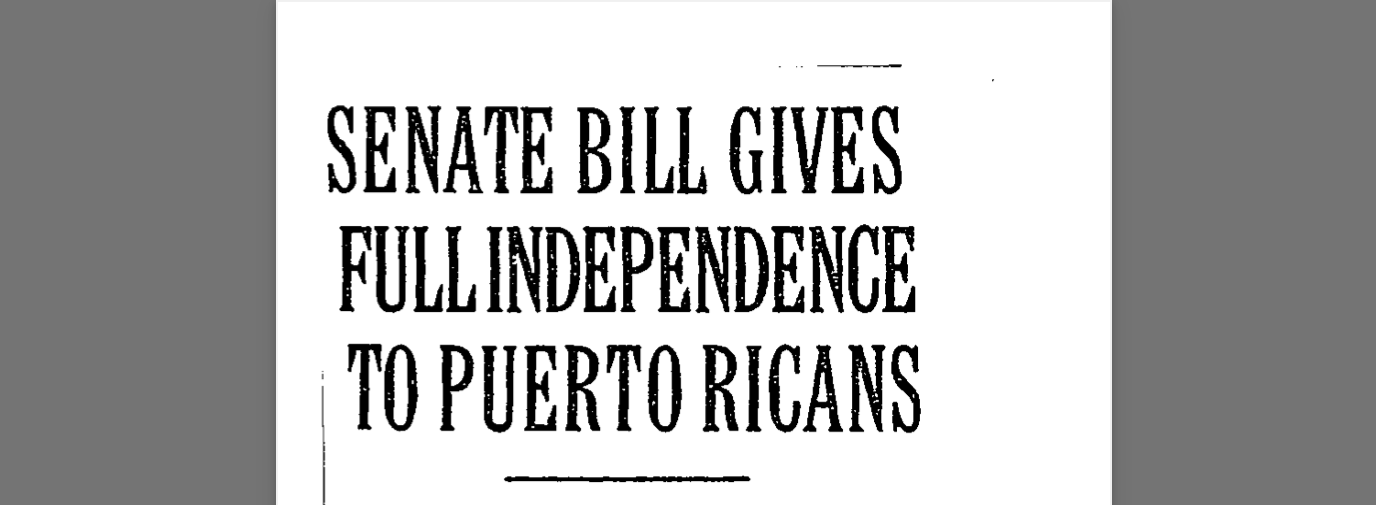Senator Millard Tydings of Maryland introduced a bill giving independence to Puerto Rico in 1936. The bill was similar to the bill which gave the Philippines independence. It asked for a referendum in Puerto Rico, to take place in 1937, asking the question, “Shall the people of Puerto Rico be sovereign and independent?” This was the question asked in the Philippines. In comparison, Alaska and Hawaii in the 20th century and Puerto Rico in the 21st century asked whether the people of their territories wanted statehood.
Tydings was the chair of the Committee on Territories and Insular Affairs, which was responsible for roughly the same things as the current Committee on Natural Resources.
Economic provisions
Luis Muñoz Marin, at that time a leader of a pro-Independence Party, read the bill and rejected it, saying that the economic provisions were unfair. “Under the bill introduced,” he said according to the New York Times, “Independence plays the role of a victim in a hold-up.”
The Resident Commissioner at the time described it as “unfair, arbitrary, and devastating to Puerto Rico.”
San Juan’s main newspaper headlined an article about the bill, “Plebiscite or Ambush?”
The Tydings bill called for Puerto Rico to be called a commonwealth for four years after the referendum if the voters said yes to independence. Over that period, the United States would gradually impose the same tariffs required of other foreign nations. On July 4th of 1941, the bill said, if Puerto Rico had chosen independence, the Island would be declared independent and the United States would “recognize the independence of Puerto Rico as a separate and self-governing nation.”
The U.S. president would then invite other nations to recognize Puerto Rico, the bill continued. The government of Puerto Rico at that time favored statehood for Puerto Rico.
Those who favored independence were not happy with the idea of paying the same tariffs on American goods as any other country. They also wanted the United States to continue economic support of Puerto Rico, which the Tydings bill did not include.
Another Independence bill
The Tydings bill did not become law. Shortly after it was introduced, Rep. Vito Marcantonio, a New York Congressman, introduced another independence bill. His bill had no tariffs for Puerto Rico, and allowed free travel and employment.
Neither of these bills suggested that people born in Puerto Rico could keep their U.S. citizenship after independence.
Neither of these bills, nor the other independence bills which have followed, became law.








No responses yet